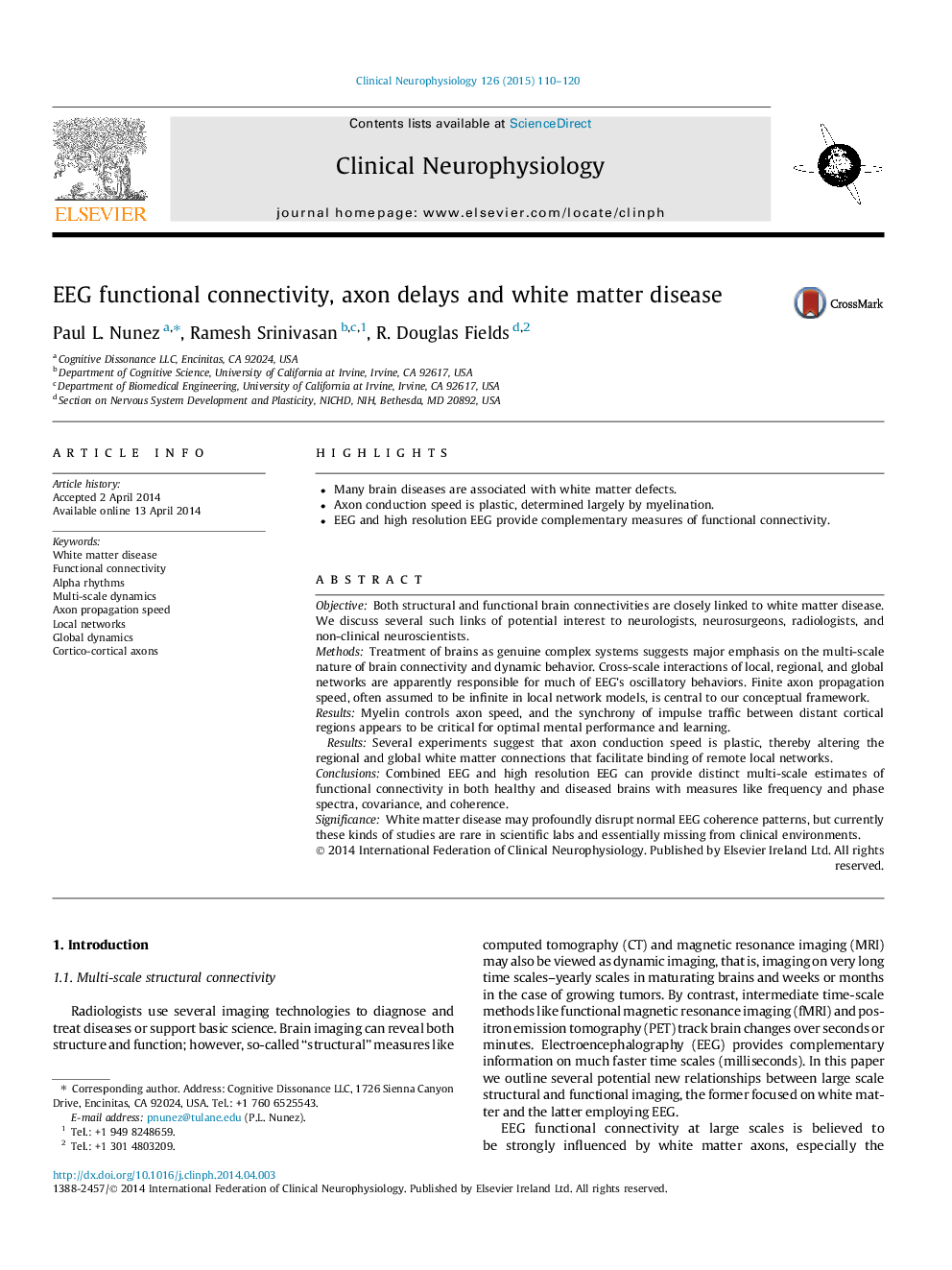| Article ID | Journal | Published Year | Pages | File Type |
|---|---|---|---|---|
| 3043216 | Clinical Neurophysiology | 2015 | 11 Pages |
•Many brain diseases are associated with white matter defects.•Axon conduction speed is plastic, determined largely by myelination.•EEG and high resolution EEG provide complementary measures of functional connectivity.
ObjectiveBoth structural and functional brain connectivities are closely linked to white matter disease. We discuss several such links of potential interest to neurologists, neurosurgeons, radiologists, and non-clinical neuroscientists.MethodsTreatment of brains as genuine complex systems suggests major emphasis on the multi-scale nature of brain connectivity and dynamic behavior. Cross-scale interactions of local, regional, and global networks are apparently responsible for much of EEG’s oscillatory behaviors. Finite axon propagation speed, often assumed to be infinite in local network models, is central to our conceptual framework.ResultsMyelin controls axon speed, and the synchrony of impulse traffic between distant cortical regions appears to be critical for optimal mental performance and learning.Several experiments suggest that axon conduction speed is plastic, thereby altering the regional and global white matter connections that facilitate binding of remote local networks.ConclusionsCombined EEG and high resolution EEG can provide distinct multi-scale estimates of functional connectivity in both healthy and diseased brains with measures like frequency and phase spectra, covariance, and coherence.SignificanceWhite matter disease may profoundly disrupt normal EEG coherence patterns, but currently these kinds of studies are rare in scientific labs and essentially missing from clinical environments.
